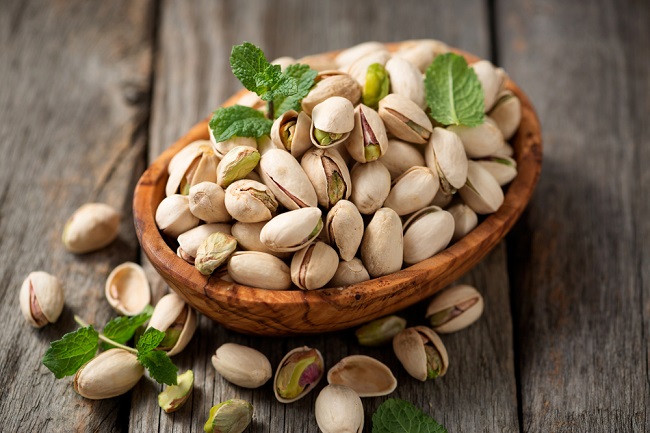Pyloric stenosis is a condition when it happens narrowing on pylorus, which is the part that connects the stomach with the duodenum (duodenum). This condition is generally experiencedby baby 2–8 weeks old.
The narrowing of the pylorus occurs gradually and continues to worsen to the point where food and water from the stomach cannot enter the duodenum. This condition can cause the baby to experience vomiting, dehydration, weight loss, and feeling hungry all the time.

Pyloric stenosis is a rare disease. This condition only occurs in 2-3 babies out of 1000 births.
Causes of Pyloric Stenosis
It is not known exactly what causes the narrowing of the pylorus. However, it is suspected that this condition is influenced by genetic and environmental factors. The following are some of the factors that can increase the baby's risk of developing pyloric stenosis:
- Gender
Boys, especially in their first birth, are more at risk of developing pyloric stenosis than girls.
- Premature birth
Compared with normal born babies, pyloric stenosis is more common in babies born prematurely.
- Family health history
Pyloric stenosis is often experienced by babies born to parents with a history of similar conditions.
- Use of antibiotics
Giving antibiotics to babies at an early age, for example to treat whooping cough, or taking antibiotics by the mother at the end of her pregnancy can put the baby at risk for pyloric stenosis.
- Smoking during pregnancy
Mothers who smoke during pregnancy can also increase the risk of pyloric stenosis in their babies.
- Bottle feeding too early
It is suspected that giving formula milk in bottles too early can increase the risk of pyloric stenosis. However, it is not certain that this condition occurs due to formula milk being given or how to give milk through a bottle, so further research is still needed.
Symptom Pyloric Stenosis
The pylorus serves as a barrier gate that helps the stomach to retain food, stomach acid, fluids and other gastric contents, before continuing its journey to the duodenum to be digested and absorbed.
When the pylorus is narrowed, food and other gastric contents cannot enter the duodenum. As a result, babies may experience symptoms such as:
- Vomiting after every feeding
Initially, the baby may appear to be vomiting normally. However, with the narrowing of the pylorus, the vomit can be spurted vigorously, sometimes even mixed with blood.
- Always feeling hungry
After vomiting, the baby will feel hungry again, and show signs of wanting to breastfeed.
- Dehydration
Dehydrated babies can be recognized by signs such as crying without shedding tears, dry skin, sunken eyes and crown, and reduced frequency of urination which can be seen from the mother's infrequent diaper changes.
- Weight problem
Pyloric stenosis makes it difficult for the baby to gain weight, sometimes even causing weight loss.
- Changes in bowel patterns
Blocking food into the intestines can cause a decrease in the frequency of bowel movements, changes in the shape of the stool, or even constipation.
- stomach contraction
Gastric contractions can be recognized by wavy movements (peristalsis) in the upper abdomen after the baby has drunk milk, but before the baby vomits. This movement occurs because the stomach muscles try to push food through the narrowed pylorus.
When to go to the doctor
Pyloric stenosis is a fairly serious condition that needs to be treated as soon as possible. Check with the doctor immediately if your baby has the above symptoms, along with several other symptoms, which include being less active than usual, crying very easily, and being sleepy more often.
Diagnosis Pyloric Stenosis
To establish a diagnosis, the doctor will first conduct a question and answer with the parents about the baby's diet and the symptoms experienced by the baby.
Then, the doctor will perform a physical examination to determine the baby's weight and growth and development. An examination is also done to see if there are signs of dehydration in the baby. The doctor will check for a lump the size of an olive on the baby's stomach which could be a sign of thickening of the pylorus muscle.
In order to make the diagnosis more accurate, the doctor will perform an abdominal ultrasound examination to see the condition of the organs and tissues in the baby's stomach. X-rays of the esophagus, stomach, and duodenum with the help of barium dye (contrast dye) can also be an option to get a clearer picture of the pylorus.
In certain cases, the doctor may also perform blood tests to determine if the baby has electrolyte disturbances.
S . TreatmentPyloric Tenosis
Pyloric stenosis does not heal on its own and requires medical attention. It is very important to provide treatment as early as possible to prevent the condition from getting worse. The treatment given depends on the symptoms experienced, as well as the age and overall health condition of the patient.
Dehydration, especially in infants, can lead to serious complications. Therefore, if the baby is dehydrated, the doctor will treat it by giving fluids and nutrients through an IV.
Then, operation pyloromyotomy will be performed to cut the thickened outer layer of the pyloric muscle. This allows the inner lining of the pyloric muscle to protrude so that gastric contents can pass through the pylorus and into the duodenum.
Pyloromyotomy This is usually done using a laparoscopic technique. This procedure is done by making a small incision in the baby's abdomen. With the laparoscopic technique, postoperative recovery can be faster.
Pyloric stenosis surgery generally lasts less than an hour, but babies need to go through a healing process in the hospital for 1–2 days before being allowed to go home. For several hours after surgery, nutritional fluids will be given through an IV until the baby is able to breastfeed again.
Keep in mind, though, that your baby may still vomit a little for a few days after surgery. However, as the stomach returns to work normally, the condition will improve on its own. The doctor will also give medicine to relieve pain that usually appears after surgery.
Pyloric stenosis very rarely recurs. Babies who have undergone surgery generally recover and do not experience the long-term effects of this condition.
Complications of Pyloric Stenosis
Pyloric stenosis if not treated immediately can cause complications in the form of failure to thrive and gastric irritation. In certain cases, pyloric stenosis can also cause jaundice (jaundice).jaundice), which is a condition characterized by yellowing of the eyes and skin due to a buildup of bilirubin produced by the liver.
In addition, complications can also arise from dehydration that is not treated immediately. These complications can include:
- Seizures
- Disorders of the kidneys or urinary tract
- Hypovolemic shock
Pyloric Stenosis Prevention
Given that the exact cause of pyloric stenosis is not known, there is no way to prevent this condition. The best thing that can be done is to avoid factors that can increase the risk of developing this condition, such as:
- Quit smoking, especially during pregnancy
- Not taking antibiotics in the third trimester of pregnancy
- Do not give antibiotics too early to the baby
- Don't give baby formula or bottle milk too early









